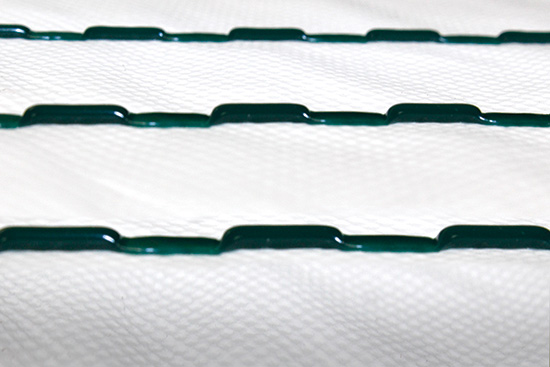The Architect’s Challenge – Designing the Best Wall for the Project
Keys to Moisture Management: Understanding Water-Resistant Barriers
Exterior cladding systems are generally classified in two categories: barrier systems and rainscreen systems. Barrier systems are intended to prevent exterior liquid water from penetrating into a wall system. However, over time some components, like sealants, in a barrier system inevitably break down and create a leak.
Rainscreen cladding materials like stone, brick, and stucco actually store water and are designed with weep holes to let water escape precisely because they are not intended to be watertight. Therefore, it is inevitable that all cladding systems leak and it’s not a matter of if, but when. Most of the time, these weep holes allow the moist air in the air cavity between the cladding and the water-resistive barrier to ventilate to the outdoors. This mode of drying is an essential feature that an architect can include in their design for more durable wall performance.
Clients expect their buildings to not leak inside and to be durable, long lasting, healthy, and comfortable to occupy. Water infiltration can lead to mold and indoor air quality problems that can require expensive mitigation and cause disruption to the occupants.
Behind the cladding, the weather-resistant barrier (WRB) works to stop the rainwater from getting into the wall system and allows it to drain, via the natural force of gravity, down and out of the wall system. But if the WRB and cladding are touching, the wall will not drain because of tension between the two surfaces. Under the influence of that force, the water sticks and stays and the structure suffers.
To mitigate that, innovative sheet WRB products effectively eliminate excess moisture and thus the damaging effects of mold and rot. Because of their design, these products remove at least 100 times more bulk water from a wall versus standard housewraps. This is achieved through the gap created by 1.5-millimeter spacers bonded to a high-performance housewrap. This gap design provides a true drainage space between the sheathing and cladding material.
Further, the innovative configuration of these spacers allows drainage of the plane in any direction—horizontal, vertical, slanted—which helps eliminate negative consequences from the common irregularities of field installation. In other words, if the drainable WRB is installed upside down or sideways, no harm, no foul. While furring strips have traditionally been employed to separate the cladding from the WRB to allow space to ease the hydrostatic pressure and to allow drainage to occur via gravity, this method of providing drainage by the very design of the WRB saves time and money over the older methods.

Photo courtesy of TamlynWrap
The key elements that create this weather resistant barrier’s drainability are the 1.5-millimeter spacers that help separate the barrier from the cladding, thereby breaking the hydrostatic pressure that keeps water from draining down and out. This allows the natural force of gravity to move the water down and out, protecting the building components. Without hydrostatic pressure impeding drainage, nature can do its job.
Notice

www.ocbuildingspec.com

www.tamlynwrap.com









